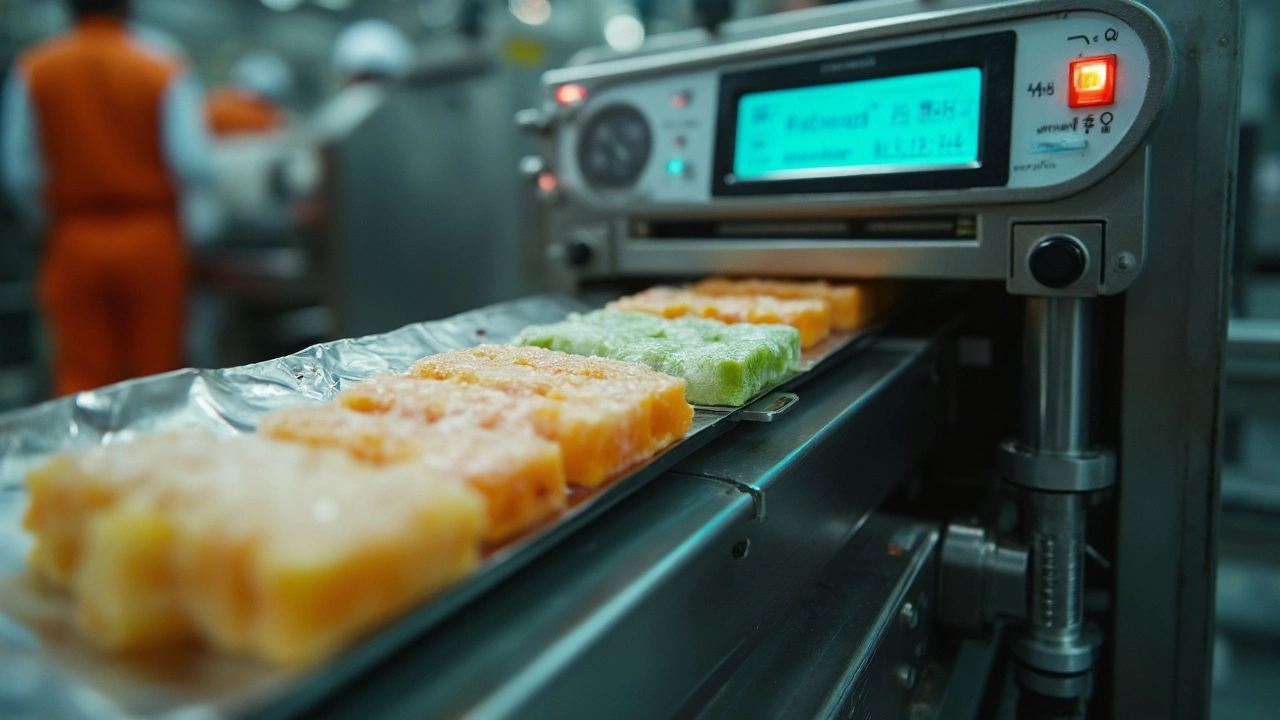
Ever wonder what 0.001 of an inch is called, especially in the world of food processing? It's called a 'mil,' a tiny yet crucial unit of measurement. In the context of food processing, precision is more than just a nice-to-have—it's a necessity. Knowing when and how to use mils can make all the difference, whether you’re dealing with the thickness of packaging or making sure your machinery is in tip-top shape.
Now, you might think that such a small unit sounds insignificant, but it's all about perspective. In the industry, every detail counts, and using the right measurement could mean better quality control and resource management. For instance, ensuring consistent film thickness in packaging not only impacts the product's shelf life but also affects production costs.
What is a Mil?
Ever hear someone mention a mil in conversation, and you weren't quite sure what they meant? In measurement terms, a mil is simply 0.001 of an inch. Yep, that's one-thousandth of an inch! It's a unit that's especially handy in industries where precision is everything, like food processing where every detail counts.
Let's break it down a bit further. In metric terms, one mil equals about 0.0254 millimeters. So, while it might seem tiny, it holds its weight when it comes to measuring thickness or even micrometers. You'd often come across mils in contexts like specifying the thickness of plastic films, coatings, or layers in packaging materials. Think of it as the pros’ secret tool to get everything just right.
Why Use Mils?
The main reason for using mils is precision without going overboard. Imagine you're customizing a machine part or setting up a film for food packaging—these require an accuracy that common units just don't provide. Not as hefty as inches or centimeters, a mil is all about getting the exact measurements that make a difference in quality and function.
The Mil in Action
Take the example of plastic wrap; these are often specified in mils to ensure consistency and strength. A typical plastic wrap might be 2 mils thick which impacts not just durability but also costs and performance. Similarly, trays, seals, and a myriad of other components are gauged in mils to meet stringent regulatory and safety standards.
Quick Conversion Table
| Inches | Mils | Millimeters |
|---|---|---|
| 0.001 | 1 | 0.0254 |
| 0.005 | 5 | 0.127 |
| 0.01 | 10 | 0.254 |
By now, it should be clear how vital a mil is in making things just right in food processing. Whether it's the thickness of an edible coating or the gap in a sealing machine, using mils keeps the focus on precision.
Importance in Food Processing
In the food processing world, precision is king, and the mil is vital in keeping things consistent and efficient. You’ve got to handle various materials, from thin packaging films to thicker layers used in sealing. Knowing what a mil is lets you measure things accurately, which is key to maintaining quality and safety standards.
Why Mils Matter
The thickness of materials like plastic wraps or even aluminum foil is often measured in mils, and even a tenth of one can lead to differences in product durability and protection. This means that using the right thickness ensures better product protection without overusing materials, saving money and resources. Imagine trying to stretch out an expensive wrap over lots of products; every millimeter counts! Proper mil usage helps keep things cost-effective while still protecting your goods.
Quality Control
Quality control in food packaging often involves checking the consistency at which these materials are made. Factories can be like well-oiled machines, but a small error in mil measurement can result in faulty products. Many facilities use specialized tools to gauge thickness, adjusting production lines to account for variations. This close monitoring can significantly reduce waste and improve efficiency.
Practical Impacts
When precision enters the picture, the impact extends even further. Machines used for slicing, dicing, and even labeling incorporate mil measurements to ensure that food products aren't damaged during processing. For instance, cutting machines are calibrated to exact dimensions, and equipment setup will often rely on knowing the exact thickness needed.
Industry Practices
Some companies utilize an organized system where teams regularly check and adjust their settings to adapt to the mil requirements for different products. This process helps align production goals with actual outcomes, ensuring everyone from line workers to management is on the same page.
Understanding these specifics can make life in the food processing industry a whole lot smoother, proving that, sometimes, the small stuff is a big deal!

Practical Applications
In the realm of food processing, knowing how to use the mil can lead to better outcomes across the board. Let’s explore how this tiny unit makes a massive difference.
Packaging Precision
One of the most direct applications of mil is in determining the thickness of packaging materials. For instance, plastic wrap for food items often comes in varying thicknesses, like 0.5 mil to 3 mil, depending on the protective needs. A thicker film might be used for heavier items or those requiring a longer shelf life.
Equipment Calibration
When dealing with machinery, accuracy is key. Adjusting machine parts by fractions of an inch means tweaking them by a few mils. Regular calibration using precise measurements ensures consistent output and reduces downtime due to maintenance issues.
Quality Control
Monitoring thickness and dimensions of products like slices of cheese or sheets of pasta is crucial for maintaining quality. By using units like mil, processors can minimize waste and ensure that every product meets the required standards.
Cost Management
Precision in using mil measurements can directly affect costs. Thicker materials mean more expense, so knowing the precise thickness helps in choosing the most cost-effective yet efficient option. It's a balancing act between using enough material to ensure quality but not so much that it drives up costs unnecessarily.
| Application | Typical Mil Range |
|---|---|
| Plastic Bags | 1 mil - 3 mil |
| Food Wrap | 0.5 mil - 2 mil |
| Aluminum Foil | 0.6 mil - 2 mil |
Whether it's about ensuring the right thickness for packaging or maintaining the precision of machinery, the mil is a quiet but mighty player in food processing. By understanding how to leverage this unit, companies can improve quality, reduce waste, and efficiently manage costs.
Tips for Accurate Measurement
Getting measurements right, especially when we're talking about a mil, can definitely up your game in food processing. Here are some practical tips to keep your measurements spot-on.
1. Invest in Quality Tools
Using top-notch measuring tools is a game-changer. Calipers or micrometers can give you the precision needed to accurately measure down to a mil. Regular calibration of these tools ensures they give consistent readings, so don’t skimp on quality to save a few bucks.
2. Regular Calibration
Even the best tools need regular calibration to stay effective. Check your tools against known standards frequently to ensure they remain accurate. This practice can actually save you time and money in the long run by avoiding measurement mix-ups.
3. Understand Your Materials
Different materials can react differently under various conditions. For example, films might expand or contract with temperature changes, affecting thickness measurements. Always consider the environmental conditions and make allowances if necessary.
4. Training and Documentation
Ensure everyone in your team is well-trained in using measurement tools. Misunderstanding or misuse can lead to inaccurate readings. Keep documentation of procedures so everyone stays on the same page. Not only does this improve consistency, but it also helps in troubleshooting when issues arise.
5. Set Up a Routine
Like any other part of your operations, having a routine for measurement checks is key. Make this process a regular part of maintenance. Keeping a log of measurements and any deviations can alert you to potential problems before they escalate.
With these steps, maintaining accuracy with food processing units becomes a lot easier. And don’t underestimate the power of getting it right. Not only does it maintain quality, but it also maximizes efficiency.